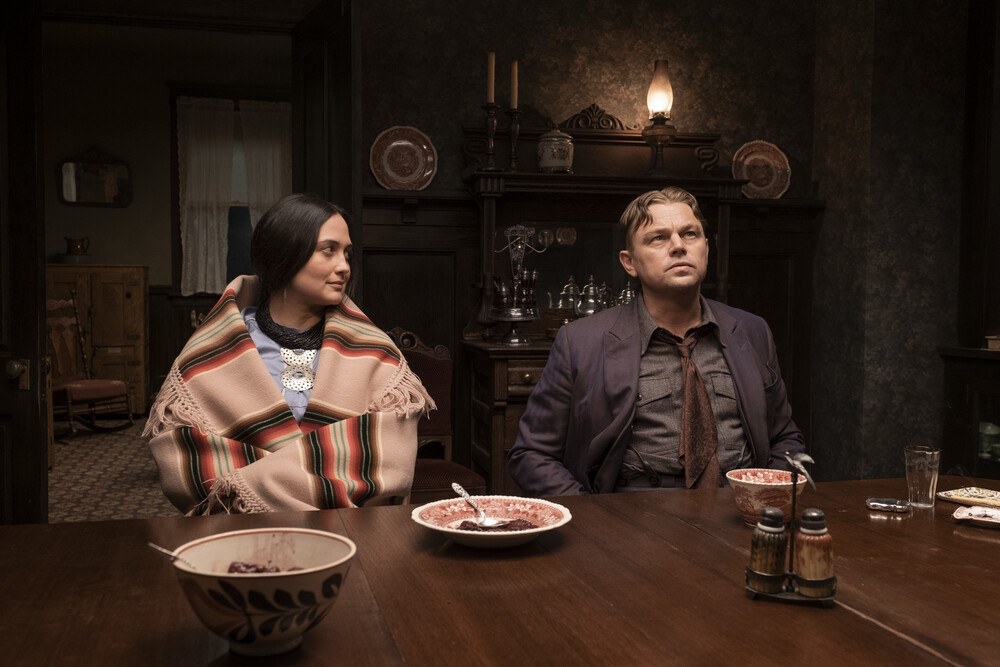Killers of the Flower Moon

Lily Gladstone and Leonardo DiCaprio star in KILLERS OF THE FLOWER MOON. (Photo: Paramount)
Profoundly sad and disturbing, Killers of the Flower Moon is an epic saga of oppression and opportunism burdened by a lingering legacy of grief and despair.
Yet this emotionally powerful and superbly acted period drama from director Martin Scorsese doesn’t wallow in misery, vividly capturing its true-life tale of greed and injustice with subtlety and nuance — while finding hope amid the heartbreak.
“There’s evil coming through here,” explains a chief (Yancey Red Corn) for the Osage tribe in 1920s Oklahoma. “We have something it wants.”
That something is the oil-rich land of a people already inhumanely displaced by forced government relocation. Now, rather than enjoying their rightful wealth, the indigenous heirs face an intrusion by white interlopers preaching friendship and integrity. Instead, they bring a passive acceptance of casual racism, and more importantly, a tragic cycle of ruthless violence driven by ego, power, and avarice.
Not coincidentally, the tribe is dealing with a string of mysterious deaths upon the arrival of Ernest (Leonardo DiCaprio), the nephew of Bill “King” Hale (Robert De Niro), a wealthy rancher whose philanthropy is intended to obscure his corrupt ulterior motives.
Ernest falling for and marrying Mollie (Lily Gladstone) follows King’s plan to secure her land rights. Mollie becomes pregnant and later falls ill, which causes Ernest’s loyalties to waver.
Their dynamic relationship forms the emotional core. DiCaprio wears Ernest’s conflicted conscience on his face, with his persistent scowl masking his own unresolved trauma. The understated Gladstone (Certain Women) masterfully speaks through gestures and expressions as much as dialogue.
Meanwhile, the murders and conspiracy theories prompt the dispatch of an FBI investigator (Jesse Plemons) and his team.
The multilayered screenplay by Scorsese and Eric Roth (Forrest Gump), based on the novel by David Grann, navigates the tricky thematic elements of the material with sensitivity and reverence yet doesn’t turn heavy-handed or preachy.
The period re-creation is stylish and evocative while exercising restraint in avoiding cheap cultural appropriation, weaving tribal clothing and customs into the film’s visual and narrative fabric.
The committed performances and technical flourishes help to offset some of the procedural predictability in the final act, along with the lack of depth and dimension in the periphery characters.
Emphasizing reflection and quiet contemplation, Killers of the Flower Moon ratchets up the tension in the second half as it examines a cutthroat climate of rampant distrust, moral ambiguity, and elusive liquid currency.
Rated R, 206 minutes.